Alternatively, to avoid cluttering the system with software you may never need, select the Minimal option.
Regardless of the choice made here, all of the software provided with Ubuntu can be easily installed or removed at any point in the future if needed.
The option is also available to update the software packages that comprise the Ubuntu distribution during the installation.
Ubuntu, as with most actively supported operating systems, continues to be updated with bug fixes and security patches long after it has been released to the public.
If this option is selected and the system is connected to the internet, the installer will download any updates issued since the Ubuntu installation image was released and applies them to the system during installation.
If you choose not to perform this update during the installation process these updates may still be applied at any time after the installation completes.
A second option provides the choice of whether to install 3rd party non-open source software to support specific hardware devices and the playback of proprietary media files on the system.
This option is recommended if you just want the best experience from your Ubuntu installation.
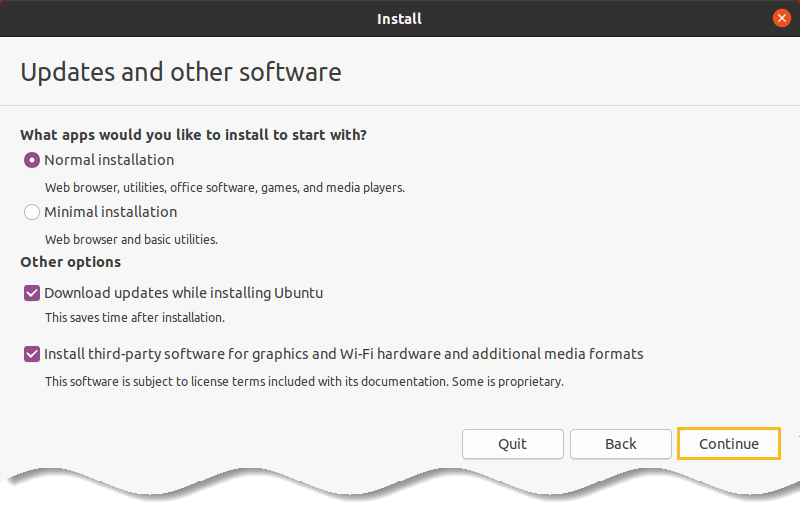
Having made appropriate selections, click the Continue button to proceed to the disk allocation screen.
Step 16: Assuming that this is a new disk on which an existing operating system is not present, the installer will provide the option to erase the entire disk and use it for Ubuntu (in which case the installer will calculate and implement a typical and recommended partition layout).
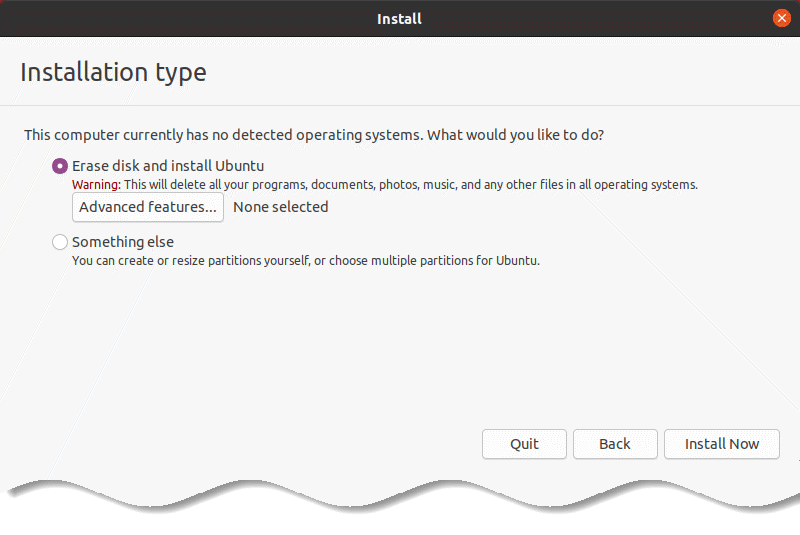
Alternatively, to define your own custom disk layout, select the Something else option to manually create and size the disk partitions that will contain the operating system and your data.
Clicking on the Advanced Features button will provide the option to use Logical Volume Management (LVM).

LVM is strongly recommended to make the management of the disks and partitions on the system easier.

If the security of the data stored on the disk is of paramount concern, select the option to encrypt the Ubuntu installation.
If this option is selected the next screen will prompt you to choose a security key which will then need to be entered each time the system starts.
The option is also provided to use the ZFS filesystem. ZFS is an advanced filesystem that has many of the features of Logical Volume Management built-in together with a range of other features such as the ability to take disk snapshots and shadowing (copy-on-write).
Although ZFS has been around for many years, the implementation on Ubuntu is considered to be experimental at this stage and should not be used for production environments.
Once the selections have been made, click on the Install Now button to begin the installation process at which point the system will seek confirmation that the changes are to be made to the disk drive:
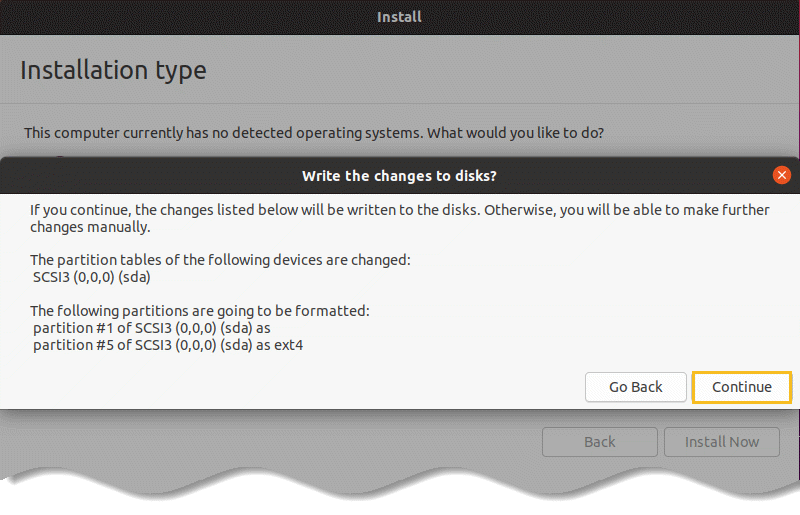
Click Continue.
Step 17: While the installation is in progress, the installer will ask for information about your geographical location in order to configure time zone settings:
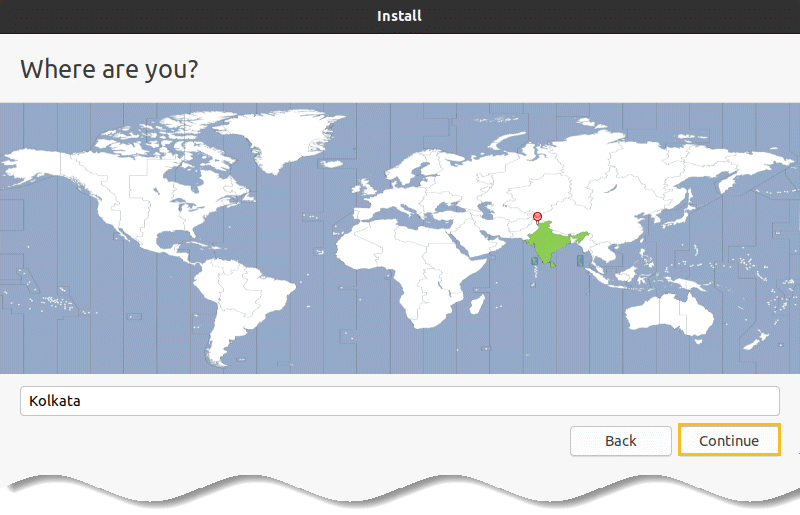
Step 18: Next, the installer will ask you to provide a user name and password for the first account on the system.
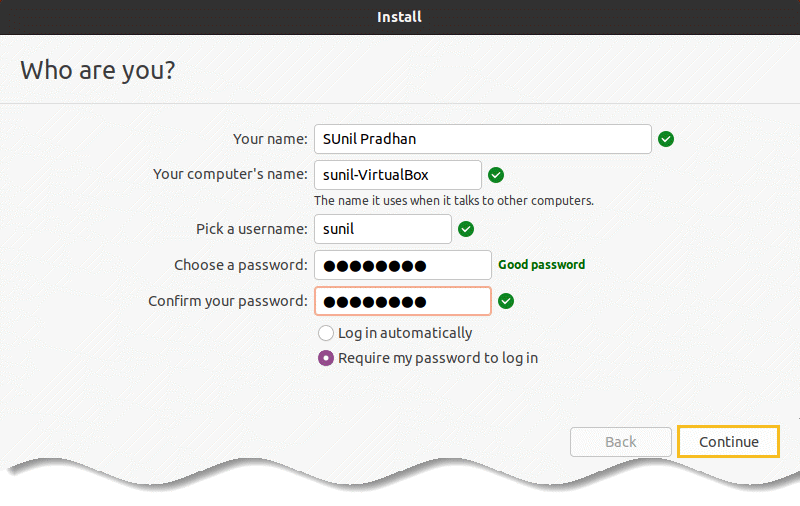
The option is also provided to dictate whether the password must be specified each time the user wishes to log into the system.






























Add comment